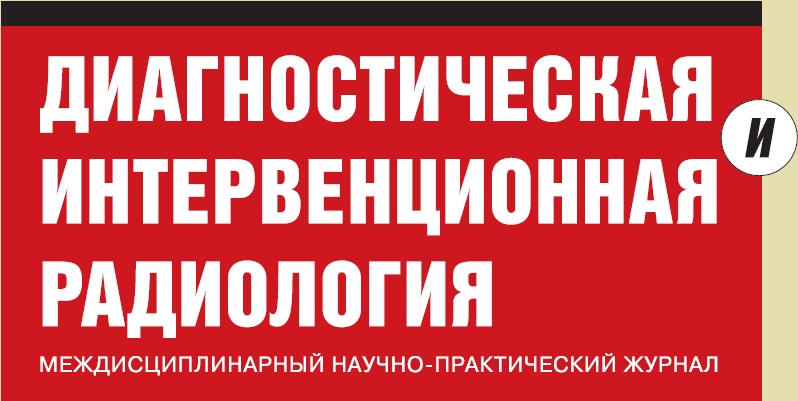Аннотация: Заболевания сердечно-сосудистой системы атеросклеротической этиологии остаются одной из наиболее актуальных проблем современной медицины. Целью этой работы стала оценка эффективности эндоваскулярного лечения стенозов и окклюзий общей и наружной подвздошных артерий (ПВА) при помощи самораскрывающегося стента Jaguar SM. В исследование входили 95 больных 44-79 лет (71 мужчина и 34 женщины), которым с 2005 по 2007 год в радиологическом отделении университетской клинической больницы Белостока (Польша) и в радиологическом отделении госпиталя министерства внутренних дел и управления (Варшава, Польша) было выполнено эндоваскулярное лечение окклюзионно-стенотических поражений ПВА. У всех пациентов они были атеросклеротической этиологии. Минимальная длина стеноза составила 10 мм, тогда как наибольшая длина окклюзии - 90 мм. Морфологически стенозы оценивали согласно классификации TASC II. У 10 больных поражение артериального русла отнесено к типу A, у 39 пациентов - B, у 36 больных - C и у 10 пациентов - D. Попытки эндоваскулярной реканализации окончились неудачей в 5 случаях поражения типа D, и больные были направлены на открытое оперативное вмешательство. В одном наблюдении возникло осложнение - разрыв артерии во время предилатации, что потребовало установки стент-графта. Постдилатация имплантированного стента баллоном выполнена в 95% случаев. У всех пациентов достигнуто восстановление кровотока, которое подтверждалось ангиографически. Клиническая оценка и ангиографическое исследование проводили в течение 2 лет. Частота успеха в 30-дневный срок после вмешательства была 100%-ной при стенотическом и 80%-ной - при окклюзионном поражении. Частота успеха к 12 месяцам и 2 годам составила соответственно 87% и 82%. Список литературы 1. Liapis C.D., Tzortzis E.A. Advances in the management of iliac artery occlusive disease. А short review. Vasc. Endovascular. Surg. 2004: 38 (6): 541-545. 2. Gray B.H., Sullivan T.M. Aortoiliac occlusive disease. Surgical versus interventional therapy. Cur. Interv. Cardiol. Rep. 2001;3 (2):109-116. 3. Adam D.J., Bradbury A.W. TASC II document on the management of peripheral arterial disease. Eur. J. Vasc. Endovasc. Surg. 2007; 33 (1): 1-2. 4. Dotter C.T., Judkins M.P. Transluminal Treatment of arteriosclerotic obstruction. description of a new technic and a preliminary report of its application. Circulation. 1964; 30: 654-670. 5. Gruntzig A., Hopff H. Percutaneous recanalization after chronic arterial occlusion with a new dilator-catheter (modification of the Dotter technique) (author's transl). Dtsch. Med. Wochenschr. 1974; 99 (49): 2502-2511. 6. Palmaz J.C. et al. Expandable intraluminal graft. А preliminary study. Work in progress. Radiology. 1985;156 (1): 73-77. 7. Mohler E., Giri J. Management of peripheral arterial disease patients. Comparing the ACC/AHA and TASC II guidelines. Cur. Med. Res. Opin. 2008; 24 (9): 2509-2522. 8. Bosiers M. et al. Present and future of endovascular SFA treatment. Stents, stent-grafts, drug coated balloons and drug coated stents. J. Cardiovasc. Surg. 2008; 49 (2): 159-165. 9. Lagana D. et al. Percutaneous treatment of complete chronic occlusions of the superficial femoral artery. Radiol. Med. 2008; 113 (4): 567-577. 10. O'Sullivan G.J. Endovascular management of aorto-iliac occlusive disease. Abdom. Imaging. 2008; 4: 25. 11. Tsetis D., Uberoi R. Quality improvement guidelines for endovascular treatment of iliac artery occlusive disease. Cardiovasc. Intervent. Radiol. 2008; 31 (2): 238-245. 12. Kudo T., Chandra F.A., Aim S.S. Long-term outcomes and predictors of iliac angioplasty with selective stenting. J. Vasc. Surg. 2005; 42 (3): 466-475. 13. Van Walraven L.A. et al. The use of vascular stents in the treatment of iliac artery occlusion. Int. J. Angiol. 2000; 9 (4): 232-235.' 14. Carreira J.M. et al. Long-term follow-up of symphony nitinol stents in iliac arteriosclerosis obliterans. Minim. Invasive. Ther. Allied. Technol. 2008; 17 (1): 44-42. 15. Norgren L. et al. Inter society consensus for the management of peripheral arterial disease (TASC II). J. Vasc. Surg. 2007; 45: S5-67. 16. Diehm N. et al. TASC II section E3 on the treatment of acute limb ischemia. Commentary from European interventionists. J. Endovasc. Ther. 2008; 15 (1): 126-128. 17. Mousa A.Y. et al. Endovascular treatment of iliac occlusive disease. Review and update. Vascular. 2007; 15 (1): 5-11. 18. Karwowski J., Zarins C.K. Endografting of the abdominal aorta and iliac arteries for occlusive disease. J. Cardiovasc. Surg. 2005; 46 (4): 349-357. 19. Sasaki Y. et al. Stenting for superficial femoral artery atherosclerotic occlusion. Long-term follow-up results. Heart. Vessels. 2008; 23 (4): 264-270. 20. Sapoval M.R. et al. Self-expandable stents for the treatment of iliac arter. Am. J. Roentgenol. 1996; 166 (5): 173-1179. 21. Sixt S. et al. Acute and long-term outcome of endovascular therapy for aortoiliac occlusive lesions stratified according to the TASC classification. А single-center experience. J. Endovasc. Ther. 2008; 15 (4): 408-416. 22. Zana K. et al. Risk of embolism in diagnostic and therapeutic intravascular procedures - in vitro model. Orv. Hetil. 2001; 142 (34): 1837-1841. 23. Zana K. et al. In vitro evaluation of the embolic risk of diagnostic and therapeutic intravascular procedures. Med. Sci. Monit. 2001; 7 (1): 148-152. 24. Saratzis A. et al. Pharmacotherapy before and after endovascular repair of abdominal aortic aneurysms. Cur. Vasc. Pharmacol. 2008; 6 (4): 240-249. 25. Harnek J. et al. Insertion of self-expandable nitinol stents without previous balloon angioplasty reduces restenosis compared with PTA prior to stenting. Cardiovasc. Intervent. Radiol. 2002; 25 (5): 430-436.

Сайт предназначен для врачей








